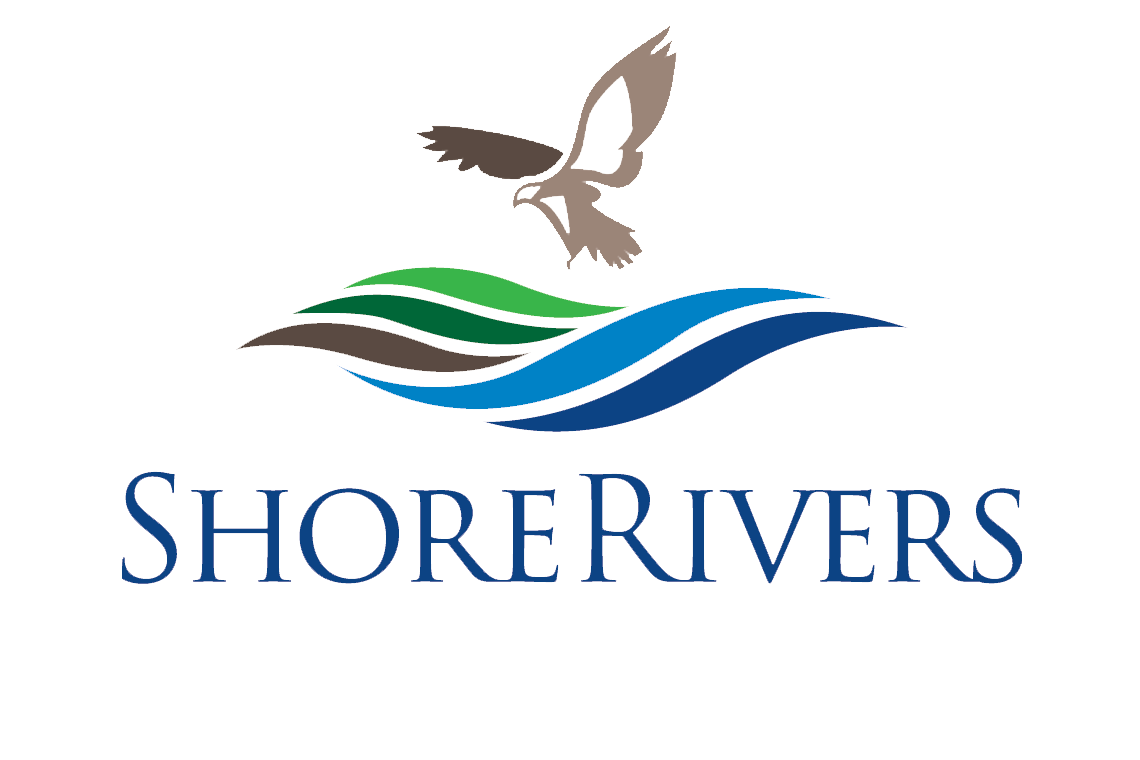Volunteer SwimTester Lauren Atwood collects a water sample at Hillsboro Landing, located on Tuckahoe Creek in Caroline County, for ShoreRivers’ 2024 Swimmable ShoreRivers Bacteria Monitoring Program.
Each summer, ShoreRivers works to provide the public with information needed to make educated decisions about contact with our rivers and creeks. This year, ShoreRivers monitored bacteria levels at 52 sites around the region — providing a critical public health service for communities and identifying pollution hotspots for future restoration efforts.
A team of community scientists called SwimTesters volunteer their time to test these popular swimming and boating sites weekly between Memorial Day and Labor Day, and generous site sponsors cover a portion of the associated costs. Their samples are then processed, according to standard scientific protocols, in ShoreRivers in-house labs and tested for enterococci — an indicator of fecal bacteria. The program follows the Environmental Protection Agency’s standard protocols for collecting and analyzing samples and makes public the results of that testing to let people know about current bacteria levels as they make their plans for recreating in our waterways. Reports detailing how the sites in each watershed performed throughout the 2024 season can be found at shorerivers.org/technical-documents.
Volunteer SwimTester Dona Sorce collects a water sample at Crouse Park in Denton for ShoreRivers’ 2024 Swimmable ShoreRivers Bacteria Monitoring Program.
“Over the past four years, ShoreRivers has grown this program from 32 testing sites across our region to more than 50, made our communications bilingual, and installed informational signs in many access locations to connect the public to our data in real time,” says Chester Riverkeeper Annie Richards. “We are incredibly proud of this effort, and our growth is a testament to how much our communities value and respond to this critical data. Bacteria levels have a direct impact on how we recreate in these waterways, and it’s up to all of us to find solutions.”
New for this year was the creation of the first ever Bacteria Blitz, where ShoreRivers’ members were invited to collect water samples from their own property or at their favorite swimming area for testing. The goal was to offer the community a chance to see a snapshot of what the bacteria levels looked like off their property while providing our Riverkeepers with insight as to where else high bacteria levels are found outside of the sites that are routinely sampled. Results of the Blitz (conducted on a day when light rain was recorded 24–28 hours prior at most sites) showed that of the 52 samples collected and processed, 34% failed to meet the recreational water quality.
“Our ability to swim in our rivers shouldn’t be taken away because of pollution,” said Choptank Riverkeeper Matt Pluta, who also serves as ShoreRivers’ Director of Riverkeeper Programs. “This program was incredibly valuable in understanding where bacteria issues exist outside of our normal testing sites so we can start to dig into finding and eliminating any potential sources.”
Bacteria typically comes from local sources like failing septic systems and faulty sewer lines, pet and animal waste left along the shoreline or washed in with stormwater runoff, and the use of some organic fertilizers like poultry manure. All participants with the Blitz were provided their own results, plus information on how to connect with their health department, and resources available for addressing issues stemming from septic systems and other known sources of bacteria pollution. Based on the interest in, and success of, this effort, ShoreRivers hopes to offer the Bacteria Blitz again next season.


